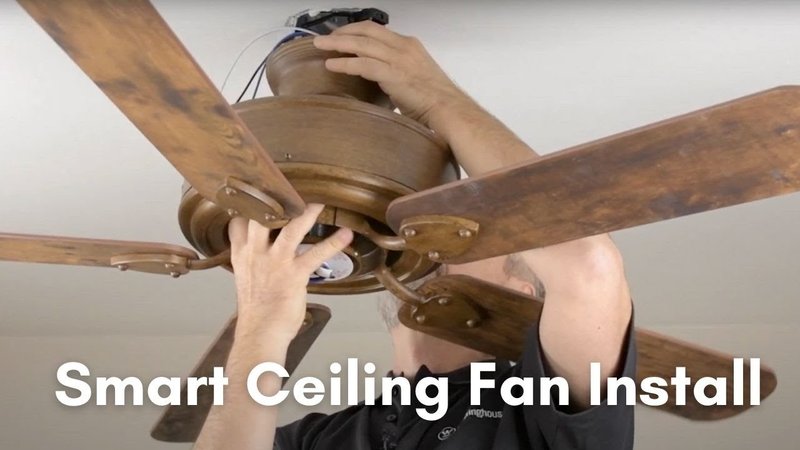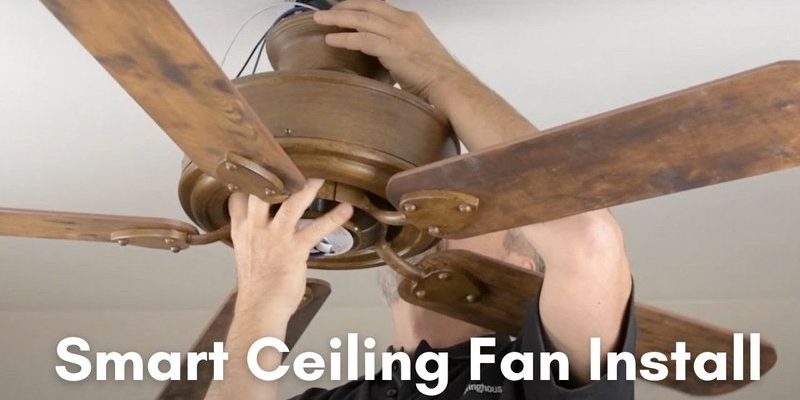
A Westinghouse ceiling fan remote isn’t magic (even if it feels that way when it saves you from getting up to pull chains). It relies on a tiny bit of tech—a synced code between the remote and the fan’s receiver. When the power cuts out, that connection can get scrambled. The good news? Re-pairing the remote after a blackout is usually pretty painless once you know the steps. Here’s the thing: you don’t need to be an electrician or a gadget wiz. I’ll walk you through it, using plain English and real-life examples, so even if your only experience with “pairing” involves socks, you’ll breeze through this process.
Understanding How Your Westinghouse Fan Remote Works
Before diving into the pairing process, let’s talk about what’s actually happening. Imagine your Westinghouse ceiling fan and its remote like two walkie-talkies. They both need to speak the same “language”—a code—to work together. This code is often set by tiny switches called DIP switches or with a learn button that creates a digital pairing.
Most newer Westinghouse remotes and fans use a “learning” receiver. That means, instead of wrestling with a bunch of tiny switches, you just press a button, and the fan listens for the remote’s signal. It’s as close as it gets to plug-and-play in the ceiling fan world. But if you have an older model, you might spot the little switches inside the battery compartment (remote) and up inside the fan’s canopy. Matching these ensures the remote and receiver are on the same channel, so your neighbor can’t accidentally control your fan.
Pairing is what tells your fan to listen only to your remote—no wires or Wi-Fi, just simple radio signals.
When the power goes out, sometimes the receiver forgets its remote, like a computer losing saved files before you hit “save.” That’s why re-pairing is needed: you’re just helping them exchange names again.
Preparing to Pair: What You’ll Need and Safety Tips
Let’s set the scene: lights are back on, but the fan ignores your remote. First things first—don’t panic! Honestly, the worst that can happen is you’ll need a screwdriver and maybe a step stool. Gather your Westinghouse remote, some fresh batteries (just in case), and, if your fan uses DIP switches, a small screwdriver.
Here’s a quick checklist:
- Turn off the power at the wall or breaker before poking around the fan. Even if you’re just opening the canopy, safety comes first.
- Check if your remote uses DIP switches or a “learn” button. Pop open the battery cover. DIP switches look like teeny levers. If you see a button labeled “learn,” you’re in for an easier time.
- Have a ladder or sturdy chair. Ceiling fans are, well, on the ceiling.
- Grab new batteries for the remote. Weak batteries cause all sorts of weird issues, especially after a power surge.
You might be wondering: “Is it really necessary to cut the power again if it just came back on?” Yes, if you need to access the fan’s canopy for DIP switches. For wireless pairing, you can usually stay on the ground.
How To Pair a Westinghouse Ceiling Fan Remote After Power Outage
Let me explain the actual step-by-step for pairing your Westinghouse ceiling fan remote. The method depends on whether you have a “learning” remote or DIP switches.
Pairing Remotes with a Learn Button
Most modern Westinghouse ceiling fans use this system. Here’s how it works:
- Turn off the fan power at the wall and wait about 30 seconds.
- Turn the power back on. Within 60 seconds, press and hold the “learn” button (usually found inside the battery compartment) on your remote for 5–10 seconds.
- You’ll usually hear a beep or see the fan blades wiggle, confirming the code is synced. If nothing happens, repeat the process and double-check the batteries.
If you’re working with someone else, shout “Ready?” before you start. Timing can be fiddly—sometimes you need to press the button almost immediately after the power returns. Don’t feel silly if it takes more than one try!
Pairing Remotes with DIP Switches
If your remote and receiver both have DIP switches, here’s the process:
- Kill the power for safety, then get up close and personal with the fan’s canopy or mounting bracket. Unscrew and gently lower the cover.
- Match the DIP switch positions on the receiver to those inside your remote. Make sure every switch is aligned—think of it like setting a secret handshake.
- Put everything back together securely. Restore power. The fan and remote should now be in sync and ready to go.
DIP switches can be tricky if you’ve never seen them—take a picture before touching anything so you remember the old positions.
Troubleshooting Common Pairing Problems
Let me be honest: technology likes to throw curveballs. If your Westinghouse ceiling fan remote won’t pair after a power outage, don’t give up. Sometimes the cause is laughably simple.
- Dead or weak batteries. Always swap in fresh batteries before troubleshooting anything else. The remote might be sending a weak signal.
- Receiver isn’t getting power. Double-check the wall switch or circuit breaker. The fan might be fine, but the receiver isn’t getting juice.
- Interference from other remotes. If a neighbor recently installed a fan, switch up your DIP switch combos. This keeps signals from crossing.
- Missed the pairing window. When pairing via “learn” button, timing matters. If you wait too long after restoring power, the receiver might ignore the signal. Try again.
- Remote needs a reset. Some remotes have a small reset button. Press with a paperclip for a few seconds, then retry the pairing steps.
If you’ve run through these fixes and nothing works, the fan’s receiver may have been damaged by a power surge. (That’s pretty rare, but it happens.) Most receivers are replaceable without buying a whole new fan.
What If Your Westinghouse Remote Still Won’t Pair?
Here’s the thing: sometimes electronics just dig in their heels. If you’ve tried everything, and your Westinghouse ceiling fan remote still won’t pair after a power outage, don’t assume all hope is lost.
First, try a hard reset on the fan receiver. This means turning off the breaker for several minutes, then turning it back on and repeating the pairing steps. Occasionally, the receiver just needs a little time to “forget” old connections.
If you’re using a universal remote instead of the original Westinghouse one, double-check compatibility—these devices can be finicky with certain brands. Universal remotes often have their own pairing procedures, which may override default codes.
You can also try pairing with a different remote (same model) to rule out whether it’s the remote or the receiver causing trouble. If possible, borrow a friend’s remote or buy a replacement at a hardware store—just make sure the frequency and code system match your fan.
Patience wins with these things. Take breaks if you’re getting frustrated, and always double-check which steps you’ve tried.
How Power Outages Affect Westinghouse Ceiling Fan Remotes
You might be curious why a power outage messes with ceiling fan remotes in the first place. It’s not just Westinghouse—almost all remote-controlled fans can lose sync after a blackout or surge.
The key part is the receiver, tucked inside the fan’s canopy, which holds the code that matches your remote. When a sudden power loss happens, the tiny memory inside the receiver sometimes gets wiped or scrambled. Think of it like your TV forgetting your Wi-Fi password after being unplugged—frustrating, but fixable.
Not every power cut will cause this. But after a strong surge, the receiver might “forget” its code or get stuck in an error state. That’s why pairing again gets everything back to normal—essentially rebooting the connection between remote and fan.
If you’re in an area with frequent outages, consider using a surge protector (yes, for ceiling fans!) or looking for a model that stores codes even when the power drops.
DIP Switch vs Learn Button: Which Is Easier?
Honestly, the learn button wins for convenience and speed, especially for beginners. No need to take apart the fan or wrestle with tiny tools—just hold down a button, and you’re done. If you’ve already got a fan with DIP switches, it’s not the end of the world, but it does take a bit more time and patience.
- Learn Button: Quicker and cleaner, but if the button wears out, the process can get tricky.
- DIP Switches: More “old school.” They rarely break, but matching tiny switches can be annoying if you’ve got big hands or bad lighting.
If you prefer simplicity, look for fans (or replacement remotes) with a learn button or digital pairing process. But once you get the hang of either method, it becomes second nature.
When To Call a Professional (and When Not To)
Here’s some straight talk: you don’t need to hire an electrician just to sync your Westinghouse ceiling fan remote after a power outage. But—if you notice sparking, burned smells, or loose wires while poking around the fan, it’s time to call in backup.
If you’re on a rental property or dealing with a complex ceiling fan installation (multiple fans, wall controls, or odd wiring), a pro can save you time and headaches. Otherwise, the vast majority of pairing problems—code resets, battery swaps, basic troubleshooting—are completely DIY friendly.
Save your money (and your dignity): most remote pairing problems are easily fixed from the safety of your living room floor.
Quick Reference Table: Pairing Methods
| Remote Type | Pairing Method |
| Learn Button | Power cycle fan, hold “learn” button, confirm pairing with beep/movement |
| DIP Switches | Match switch positions on remote and receiver, restore power |
| Universal Remote | Follow Universal Remote’s instructions, ensure compatibility and frequency match |
Wrapping Up: Regaining Control After a Power Outage
Having your Westinghouse ceiling fan remote stop working after a power outage can feel like technology is out to get you. But once you know how to pair the remote again—whether using a learn button or old-school DIP switches—you’ll realize it’s really just a handshake that needs a redo. Take it slow, keep safety in mind, and don’t be afraid to try the steps a couple of times. Soon enough, you’ll be back to changing speeds and dimming the lights from the comfort of your couch. With a little patience and know-how, your cool breeze is always just a button press away.
